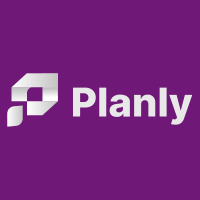In the digital age, an effective social media presence is crucial for businesses to connect with their target audiences and drive engagement. However, simply posting content without a well-structured plan can lead to inconsistency and missed opportunities. This is where a social media calendar comes in handy. In this in-depth guide, we will explore the importance of a social media calendar, how to create one, and provide valuable tips for optimizing its content to enhance your brand's online visibility.
What is a Social Media Calendar?
A social media calendar is a planning resource that helps individuals and businesses organize their social media activities and content in advance. It provides a centralized overview of what posts will be shared on which platforms, at what times, and with what purpose. By creating a clear schedule for your social media efforts, you can ensure consistent messaging and maintain an active and engaging online presence.
Why is a Social Media Calendar Important?
Improved Organization and Efficiency: By implementing a social media calendar, you eliminate the stress of last-minute content creation and posting decisions. With a pre-planned strategy in place, you can efficiently produce and distribute high-quality content, saving time and resources.
Consistency and Brand Identity: Consistency in messaging is vital for establishing your brand identity and building trust with your audience. A social media calendar ensures that your content aligns with your brand voice and values consistently throughout your social media channels.
Better Time Management: Posting at the right frequency and optimum times can significantly impact your reach and engagement. A social media calendar helps you plan and schedule your content for maximum effect and allows you to allocate time for other important tasks in your marketing strategy.
Creating a Social Media Calendar
Creating an effective social media calendar requires careful planning and consideration of key elements. Let's explore the essential steps together:
1. Identify Your Goals:
To start, clearly define your social media objectives. Are you aiming to drive website traffic, increase brand awareness, generate leads, or engage with your existing audience? Defining your goals will help you align your social media content and calendar accordingly.
2. Research Your Target Audience:
Understanding your target audience's demographics, preferences, and interests is crucial for creating engaging content that resonates with them. Conduct thorough research to identify the platforms your audience frequents and align your social media calendar accordingly.
3. Select the Right Social Media Platforms:
Not all social media platforms will suit your brand's objectives and resonate with your target audience. Focus on platforms where your audience is most active and where your content will be most effective. Consider platforms such as Facebook, Instagram, Twitter, LinkedIn, Pinterest, or TikTok, depending on your audience and content type.
4. Determine Posting Frequency and Timing:
Consistency is key on social media, but the posting frequency varies based on platform and audience expectations. Establish optimal posting frequencies for each platform, ensuring you don't overwhelm or underwhelm your audience. Additionally, consider the best times to post by analyzing your audience's behavior and using social media analytics tools.
5. Content Creation and Curation:
Develop a content strategy that aligns with your brand identity and resonates with your target audience. Think about the types of content you will create, such as blog articles, infographics, videos, or user-generated content (UGC). Incorporate a mix of original and curated content to keep your social media calendar diverse and engaging.
6. Scheduling Tools and Platforms:
To streamline your social media scheduling process, leverage different scheduling tools and platforms. Popular options include Planly, Later, Buffer, and CoSchedule. These tools allow you to plan and schedule posts in advance, saving time and ensuring consistent delivery.
7. Review and Adapt:
Regularly review the performance of your social media calendar and make necessary adjustments. Analyze engagement metrics, follower growth, and content reach to identify strengths and areas for improvement. Stay adaptable to changes in audience behavior and evolving trends.
Optimizing Your Social Media Calendar for Search Engines
Keyword Research and Integration:
Keywords play a crucial role in search engine optimization (SEO) and can also enhance the visibility of your social media content. Conduct keyword research to identify relevant and trending keywords in your industry. Integrating these keywords strategically within your social media calendar and posts can improve your chances of appearing in search results.
Utilize Engaging Content Formats:
Incorporating various content formats can make your social media calendar more appealing to a wider audience. Experiment with long-form blog posts, short and catchy captions, captivating images, videos, and interactive content like quizzes or polls. Diversifying content formats keeps your audience engaged and encourages their interaction.
Hashtags for Increased Discoverability:
Hashtags are powerful tools for categorizing and organizing content on social media platforms. Research industry-specific and trending hashtags to integrate into your social media calendar. Well-placed hashtags can improve discoverability, attract new followers, and expand the reach of your content.
Analyze Analytics and Metrics:
Use social media analytics tools to gain insights into the performance of your content. Analyze metrics such as reach, impressions, engagement, click-through rates, and conversions. By identifying top-performing content, you can tailor your social media calendar to focus on content that resonates well with your audience.
Collaborate with Influencers and Partners:
Collaborating with influencers and relevant partners can help you expand your reach and tap into new audiences. Identify influencers or brands that align with your values and target audience, and create opportunities for collaboration within your social media calendar. This can enhance credibility and generate more engagement for your brand.
Monitor and Respond to Audience Engagement:
Social media is all about building relationships and engaging with your audience. Regularly monitor your social media channels for comments, messages, and mentions. Respond promptly and authentically, fostering a sense of community and loyalty.
Continuously Experiment and Improve:
The world of social media is ever-evolving, and what works today may not work tomorrow. To stay ahead, continue experimenting with new content formats, posting times, and engagement strategies. Consistently fine-tune your social media calendar based on the insights you gather, ensuring your approach remains fresh and effective.
Driving Engagement with an Effective Social Media Calendar
A well-organized and optimized social media calendar is an invaluable tool for businesses aiming to establish a strong online presence. By following the steps outlined in this guide, you can create a social media calendar that aligns with your goals, resonates with your target audience, and enhances your visibility on search engines. Remember to continuously analyze, adapt, and optimize your social media calendar to stay ahead of the competition and drive meaningful engagement with your audience.





![Best Planoly Alternatives for 2024 [UPDATED]](https://planly.com/content/images/2024/07/pq0Csk8k98edtwRc_BiZ3A2tqE-N5QB33pVDwBp8DNM.png)
![Best CoSchedule Alternatives for 2024 [UPDATED]](https://planly.com/content/images/2024/07/AqZAjL8jHagWyDAojYgmsEbSgb1H6evxFQFE6QtBSjs.png)
![Best Planable Alternatives for 2024 [UPDATED]](https://planly.com/content/images/2024/07/1xOgTesmEBCvGsQcKcouEoXYNa-uJXsVrRqXuqbrSzo.png)